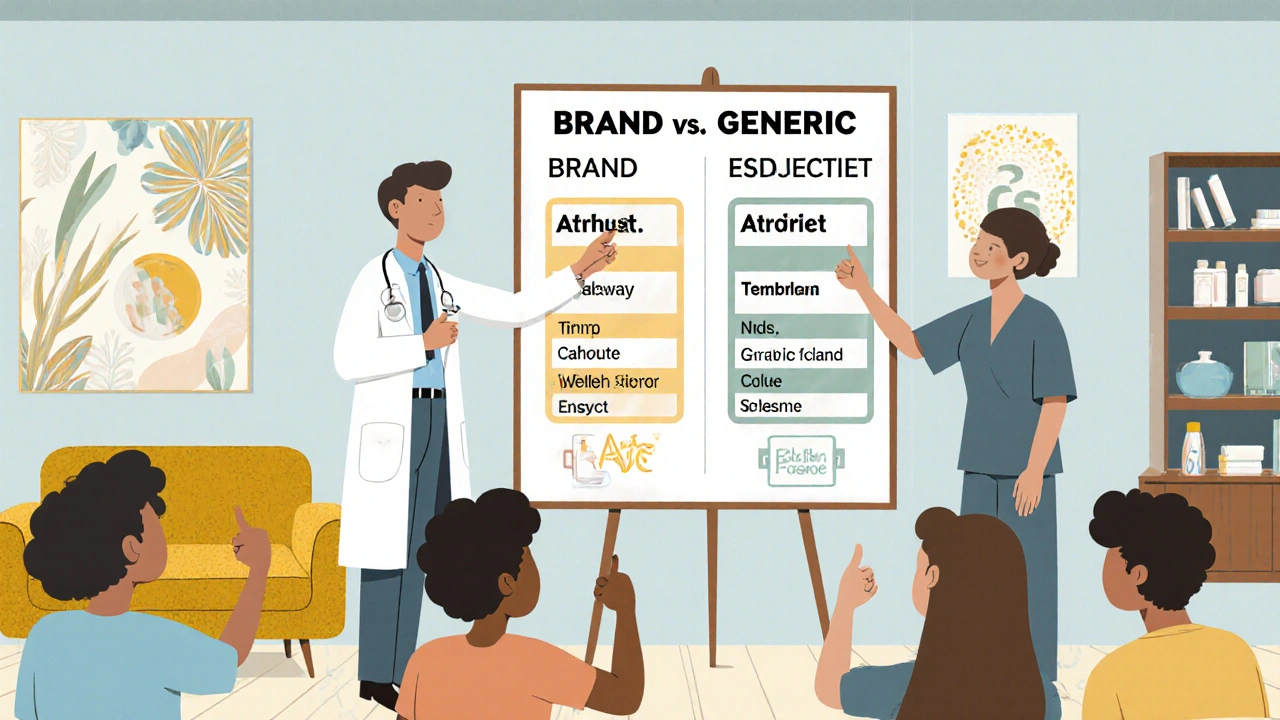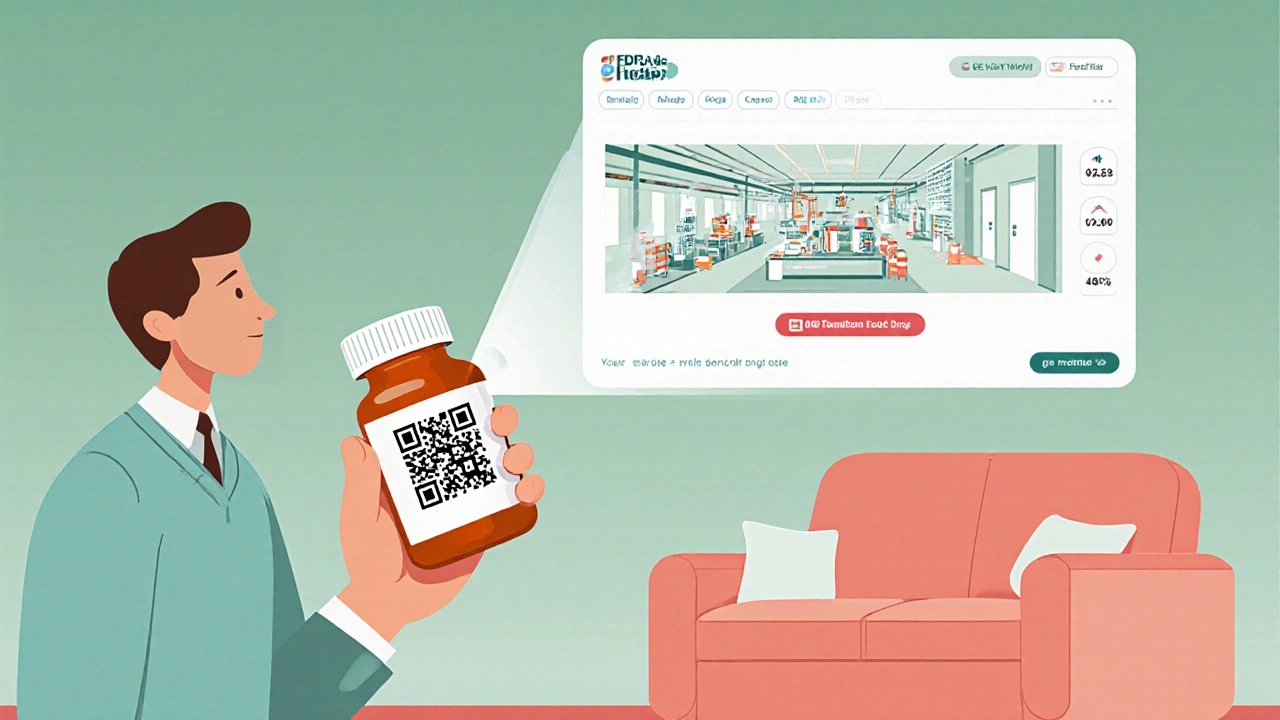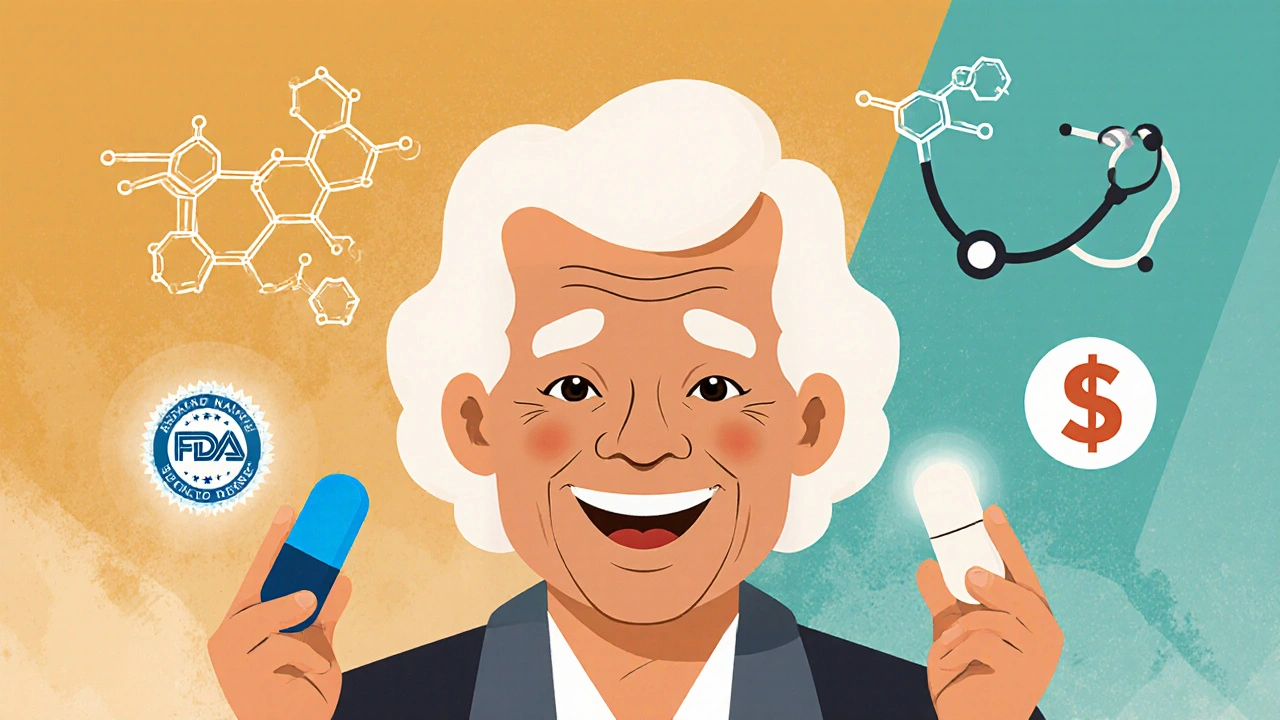Most people don’t realize that generic medications are the same as brand-name drugs in every way that matters-except the price. The FDA requires them to have the same active ingredients, strength, dosage form, and therapeutic effect. Yet, nearly half of patients still hesitate to take them. Why? It’s not about science. It’s about trust.
Why Do People Doubt Generic Drugs?
It’s not that patients are irrational. They’re reacting to real experiences and misleading messages. You’ve probably seen it: a pill that looks completely different from the one you used to take. Same prescription. Same doctor. But now it’s a small white tablet instead of a blue capsule. You start wondering: Is this really the same? Did they cut corners? That’s the core problem. Generic drugs look different because they use different inactive ingredients-fillers, dyes, coatings. These don’t affect how the medicine works, but they change the appearance. And when your body reacts differently-even slightly-it’s easy to blame the drug, not the filler. A 2024 study in Frontiers in Drug Safety and Regulation found that 29.5% of patients fear side effects from generics. Another 24.1% worry they won’t work as well. In Greece, over 30% of patients still prefer brand-name drugs because they believe they’re higher quality. In the U.S., that number is lower-but not by much. Nearly one in four patients still hesitate when offered a generic. The truth? The FDA doesn’t approve generics unless they’re bioequivalent. That means the drug gets into your bloodstream at the same rate and amount as the brand. The range? 80% to 125%-and even that’s more than enough. In practice, most generics are within 90-110% of the brand. That’s not a guess. It’s a legal requirement backed by lab tests.The Real Cost of Not Using Generics
Brand-name drugs can cost ten times more than their generic versions. Take Eliquis, a blood thinner. The brand costs about $500 a month. The generic, apixaban, runs around $10. A Medicare beneficiary in Aurora saved $1,200 a year switching over-and their blood tests stayed perfectly stable. The numbers don’t lie. In 2023, 90% of all prescriptions filled in the U.S. were generics. But they made up only 23% of total drug spending. That’s $1.7 trillion in potential savings over the next decade, according to the Congressional Budget Office. Yet, many patients pay more than they need to-not because generics are worse, but because they’re scared. The financial pressure is real. One in four Americans skip doses or don’t fill prescriptions because of cost. Generics could fix that. But only if patients trust them.Who Trusts Generics-and Why?
Trust isn’t random. It’s tied to age, income, education, and who you hear it from. People over 60 trust generics more. Why? They’ve been around longer. They’ve seen their prescriptions switch from brand to generic and stayed healthy. In fact, 71.4% of seniors believe generics are safe. That’s higher than any other age group. Employed people also trust them more-82.1% do. Why? They’ve likely been through insurance formularies and seen how much cheaper generics are. They’ve learned to ask for them. But here’s the twist: people with less education are more likely to trust their doctor’s recommendation. Those with higher education? They’re more likely to Google it-and find conflicting info online. That’s not a flaw in education. It’s a flaw in how information is presented. The biggest predictor of trust? Your doctor. A machine learning study from 2024 found that if your doctor recommends a generic, you’re 87.6% more likely to accept it. Not because they’re persuasive. Because you trust them. And when a doctor says, “This generic works just like your old pill,” patients believe them.
How Doctors and Pharmacists Can Build Trust
It’s not enough to just hand someone a new pill. You have to explain it. Kaiser Permanente cut generic refusal rates by 37% in 2023 by using a simple toolkit: visual charts showing identical active ingredients, side-by-side photos of brand and generic pills, and a one-page handout that says, “Same medicine. Different look. Same results.” Pharmacists matter too. Mayo Clinic has pharmacists spend 10-15 minutes with every patient switching to a generic. They answer questions. They check for changes in how the patient feels. They follow up. The result? 92% patient satisfaction. The national average? 68%. Here’s what works:- Don’t assume they know. Even if you’ve explained it before, patients forget. Say it again.
- Use visuals. Show them the FDA bioequivalence chart. Point out the identical active ingredient on both labels.
- Normalize the switch. Say, “Most people on this medication use the generic. It’s what we recommend.”
- Offer to monitor. “Let’s check your numbers in 30 days. If anything feels off, we’ll switch back.”
What Patients Need to Know
If you’re on a generic drug, here’s what you should understand:- Same active ingredient. The part that treats your condition is identical. No exceptions.
- Different shape or color? That’s just the filler. It doesn’t change how the drug works.
- Side effects? Sometimes, yes. But it’s rarely the active ingredient. It could be a dye or coating you’re sensitive to. Talk to your pharmacist. They can often find a generic with a different filler.
- Insurance won’t cover the brand? That’s normal. Generics are the default. You can still request the brand-but you’ll pay more.
- Is it safe? Yes. The FDA inspects generic manufacturing plants just like brand-name ones. Many are even made in the same factories.



Kyle Swatt
November 18, 2025 AT 00:51Let me tell you something real quick - generics aren't just cheaper, they're the silent backbone of modern medicine. I've been on generic metformin for six years. My blood sugar? Stable. My wallet? Still breathing. The color change? Yeah, it looked like a Pepto-Bismol tablet at first. But my body didn't care. It's not magic, it's chemistry. The FDA doesn't play games. If it says 'bioequivalent,' it means your kidneys won't notice the difference. Stop paying for branding like it's a luxury perfume.
Tarryne Rolle
November 19, 2025 AT 05:50Interesting how you frame this as a trust issue. But what if the trust is misplaced? Corporations don't care if you live or die - they care about profit margins. Generics are cheaper because they're mass-produced in factories with fewer inspections. The FDA is overstretched. You think they inspect every batch? Please. This isn't science - it's corporate theater dressed up as public health.
Kyle Swatt
November 19, 2025 AT 17:52Oh wow Tarryne, you just turned a life-saving medication into a dystopian thriller. You're not paranoid - you're just reading too many conspiracy blogs. The FDA inspects generic plants MORE than brand ones because they're the targets of counterfeiters. And guess what? The same factories make both. Eliquis? Made in the same Ohio plant as apixaban. Same machines. Same QA team. You're scared of a pill because it's white instead of blue? That's not skepticism - that's aesthetic prejudice.
Deb McLachlin
November 21, 2025 AT 00:44While the data presented is compelling and statistically robust, I would caution against generalizing patient behavior across cultural contexts. In Canada, for instance, the perception of generics is significantly more favorable due to centralized healthcare systems and public education campaigns. The psychological resistance observed in the U.S. may be exacerbated by commercial advertising norms and fragmented insurance structures, rather than inherent distrust of pharmaceutical science.